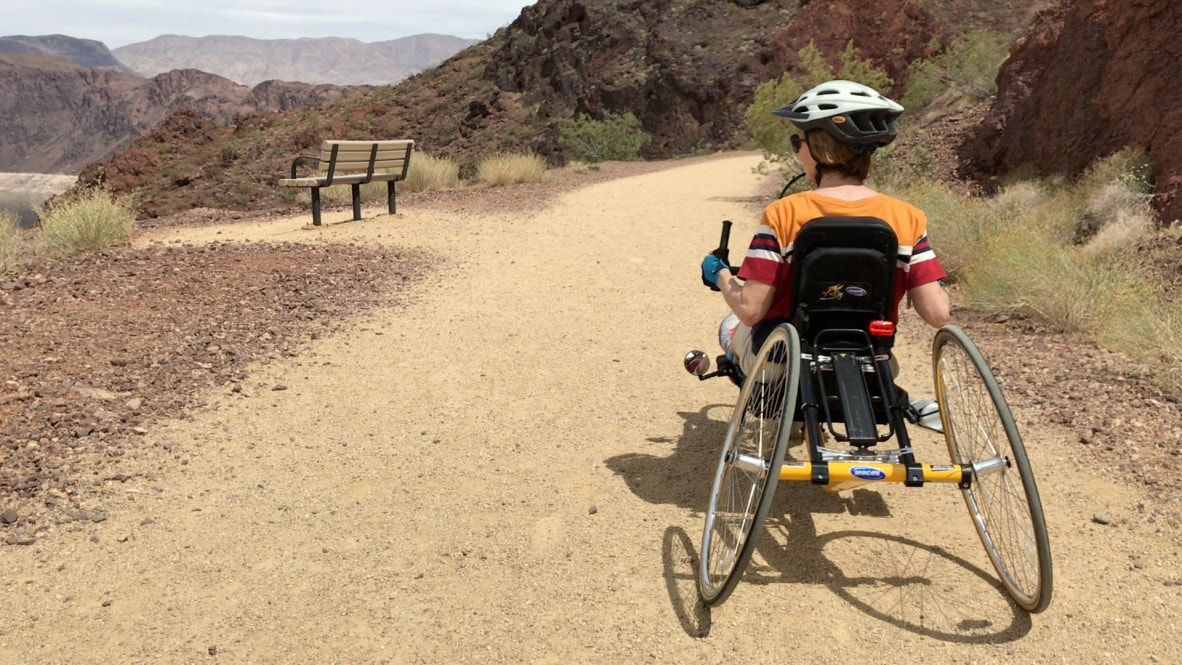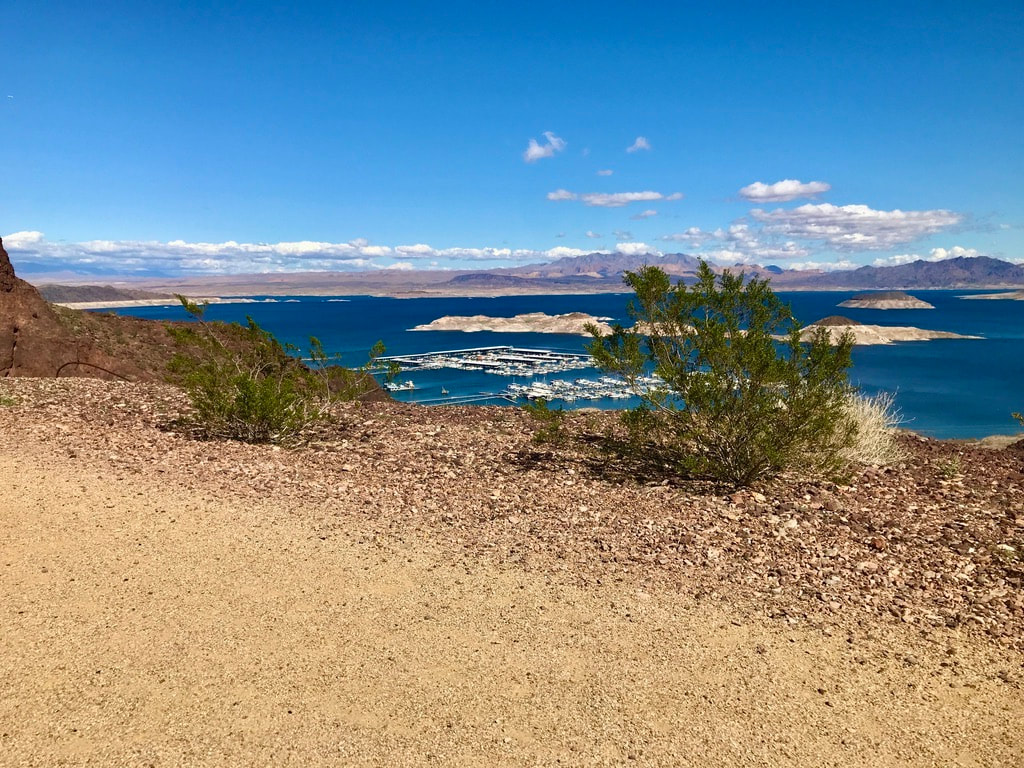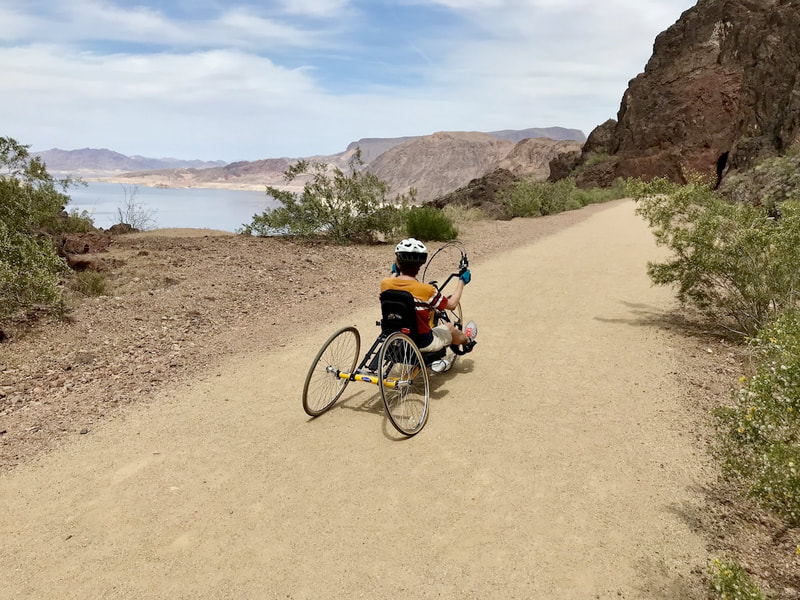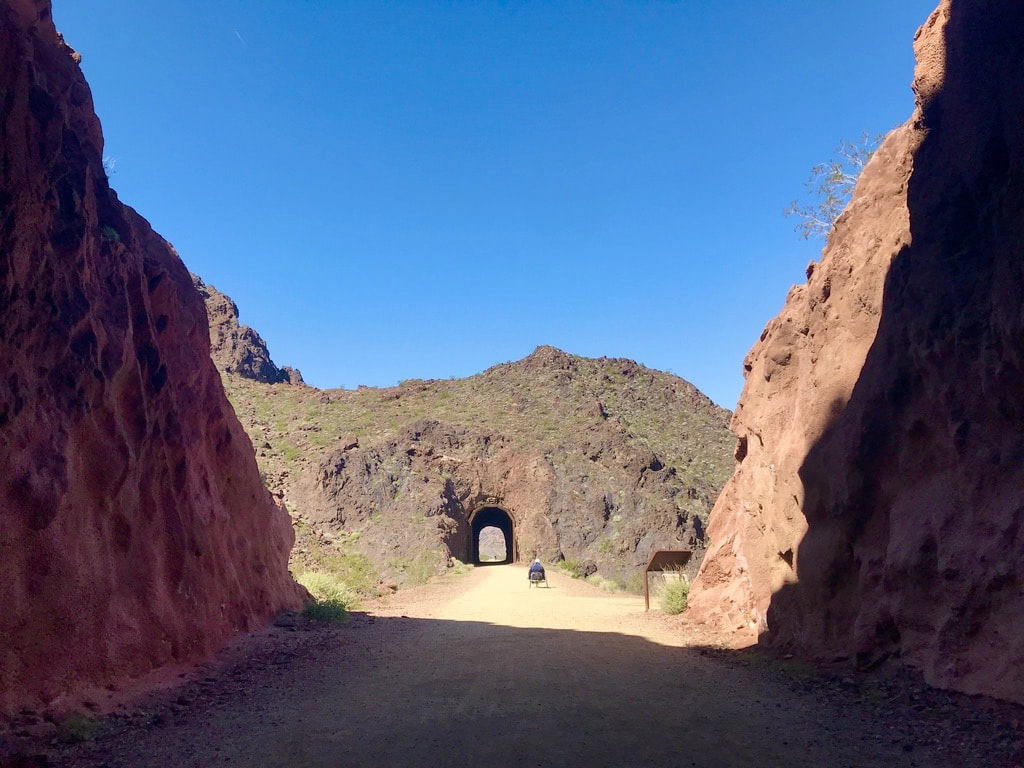|
|
Historic Railroad Trail, Lake Mead National Recreation Area
Trail Characteristics from trailhead to 2.2 miles distance Type of Trail Out and Back Trail surface Crushed decomposed granite Surface firmness Firm Trail width 10 feet Maximum grade 5 % over 10-foot section Typical grade < 1% Typical cross slope 1.5% Maximum cross slope 4.4 % Obstacles None, but steep side drop-offs Use Fee required?: None, outside the fee gate Accessible Features Benches, historic Info signs, picnic table, vault toilet The Historic Railroad Trail at Lake Mead National Recreation Area is a wonderful, universally-accessible, level trail along an abandoned railroad bed that includes five short tunnels and great views of Lake Mead. The railroad was used to carry equipment and supplies for construction of Hoover Dam in the 1930’s, and for maintenance until it was abandoned in 1961. The trail is dog, bicycle, and handcycle friendly. The trail should be avoided from June through September because of excessive heat. For a Trail Map click here For an NPS video about the trail click here The trailhead parking area is off of Lakeshore Road, near the intersection of Lakeshore and U.S. 93, 3.4 miles west of Hoover Dam. For access for individuals with disabilities, park only in the lower parking lot, not at the Bible Visitor Center. The route to the trail from the visitor center is paved but very steep by accessibility standards, up to 9% grade for 1100 feet distance. The shorter concrete access route from the lower parking lot to the trail is up to 9% grade with 5% cross slope but for only 203 feet. This access route is also a segment of the Rive Mountains Loop Trail and the parking lot is for both trails. At the trailhead parking, there is a smelly double vault toilet with support rails but without functioning door locks. Based on accessibility characteristics, the Historic Railroad Trail can be divided into two sections. The first 2.2 miles through the five tunnels is on National Park Service property, and the remaining trail to the Hoover Dam parking garage is on U.S. Bureau of Reclamation (BOR) land. In 2015 the NPS laid a stabilized decomposed granite trail surface to create a “universally accessible” surface that is firm and stable through the 2.2 miles, including the tunnels. The typical grade is 0.9% with a short maximum grade of 5% at one tunnel. Cross slope is very low. At 2.2 miles, at the boundary with the BOR land, there is a picnic shelter and an “accessible” vault toilet without running water. The part of the Historic Railroad Trail on BOR land is much less “accessible”. The trail surface is mostly loose gravel and is impossible for wheelchairs with small castors or for individuals with unsure footing. Large-wheeled power chairs may be able to traverse this section. While gradients are generally moderate, but up to 12% in a place or two, signage with a wheelchair symbol is confusing, misdirecting, and dangerous. As the BOR portion of the trail approaches Hoover Dam, the trail ends at the upper deck of the parking garage in a series of concrete 180-degree switchbacks down to the desk. Gradients here are extreme for a concrete access route at up to 21% making it impossible for someone using a manual wheelchair, or possibly other adaptive hiking means, to return. This Historic Railroad Trail, with great views of Lake Mead and the five tunnels, is recommended to be enjoyed by adaptive hikers. However, only the first 2.2 miles, one way from the trailhead near the Lake Mead Visitor Center, not from Hoover Dam, is recommended. Because of extreme heat, this trail should not be used from June through August. Trail assessment of this and other trails in southern Nevada was funded by the Federal Highway Administration through a Recreational Trails Program grant to Get Outdoors Nevada and Trail Access Project, administered by Nevada Division of State Parks. By Ed Price The Fine Print |



